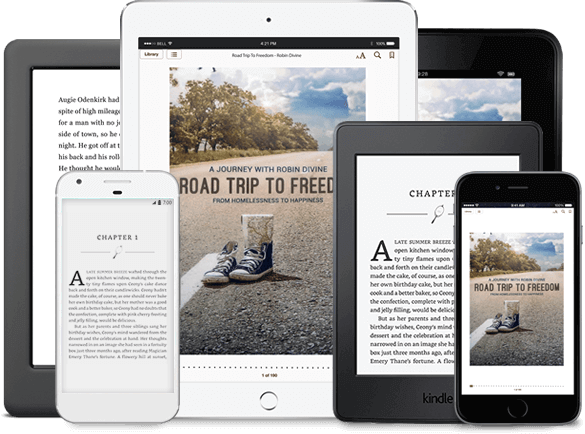Publishing an eBook requires adhering to certain formatting techniques to make the text easy to read and comprehend. The eBook format takes into account the digital framework employed in e-reader devices so that the books get displayed in precisely the same manner they are designed to be. Sticking to the standard eBook format ensures the eBook can be read on a range of devices, be it dedicated e-readers, tablets, PCs, or whatever. What’s more, such eBooks are platform-independent too.
Further, there are three broad eBook formats in all that all digital content complies with. Here is a brief introduction to all eBook formats that should be a handy guide to anyone who’d like to know more about those.
EPUB
EPUB, short for electronic publication, is among the more common eBook formats out there. It is free and open-source and is based on HTML and CSS. EPUB is able to store texts, images, tables, stylesheets, and metadata. An inherent positive with EPUB is that it can fit into almost any screen size you can think of without the screen formatting getting affected, with the smallest among them being all of 3.5-inches.
Almost all eBook readers – save Kindle – are able to decipher the EPUB file format. With the Kindle, you will need to convert the EPUB format into one that the Kindle device is able to read. You won’t have any issues opening an EPUB file using Kobo or Barnes & Noble e-readers and tablet devices. Besides, you can always fall back on free programs such as Calibre or Stanza Desktop that all able to open almost all eBook formats, including EPUB.
Mention must be made of Kindle Previewer which converts EPUB files into the Mobi files that the Kindle supports. That way, authors or publishers will get to see how their eBook will look on a Kindle device or the Kindle app.
PDF or Portable Document Format is another common eBook format used in digital publishing. Not only is it used as an eBook format, documents and other texts are also saved in PDF formats. Even business houses and government institutions save and share documents in PDF, which goes to show the wide acceptance that the format enjoys. It can be read off almost any device, be it an e-reader, tablet, smartphone, Windows PC, or whatever.
Further, even if your device isn’t able to read PDF files, you can easily download PDF file reader apps of which there is a multitude of options on all platforms, be it Android, iOS, or Windows. However, PDF is considered to be of the fixed layout type. What that means is the layout won’t adjust to fit into the display size, something that other eBook formats do.
Also, the reason PDF has come to be of the fixed layout type is that it was specifically developed by Adobe for printing. Since everything from the text style, font size, graphics, heading, sub-heading, and all is fixed before it is put to print, the same applies to PDF eBooks as well and won’t resize when opened in devices having different display sizes.
Mobi
With Mobi, you are specifically in Amazon territory though it has since been renamed as AZW3. That said, the Kindle formats currently in use – AZW3, KF8, and KFX – are all based on Mobi. Prior to that, it was the Mobipocket Reader format, which Amazon acquired in 2005 from Mobipocket SA. It is the standard Kindle eBook format, which means you will need to have a Kindle device to open a Mobi file. Else, you should have the Kindle app to open Mobi files on your computer or other devices. Mobi supports interactive content too, which includes multimedia files.
DRM
When discussing eBook formats, there is something that we need to talk about DRM as well. Short for Digital Rights Management, this provides for a means to protect eBooks against piracy. That is achieved by locking the eBook files to a specific platform and acts as a deterrent for readers to export such DRM-protected files to platforms it isn’t compatible with.
Still, DRM makes for a lax security measure as cracks are easily available to break through them. Some authors also don’t prefer DRM and do not opt for the same either. Rather, they hold out an appeal for readers to not indulge in illegal sharing of eBooks that can undermine the author’s interests. Common forms of DRM are digital watermarking, which means you can load it on as many devices as you want, but it helps curb piracy. Amazon has their own proprietary Kindle formats, with AZW and KF8, while many others use Adobe Digital Rights management for EPUB and PDF files.
With a keen interest in tech, I make it a point to keep myself updated on the latest developments in technology and gadgets. That includes smartphones or tablet devices but stretches to even AI and self-driven automobiles, the latter being my latest fad. Besides writing, I like watching videos, reading, listening to music, or experimenting with different recipes. The motion picture is another aspect that interests me a lot, and I'll likely make a film sometime in the future.

